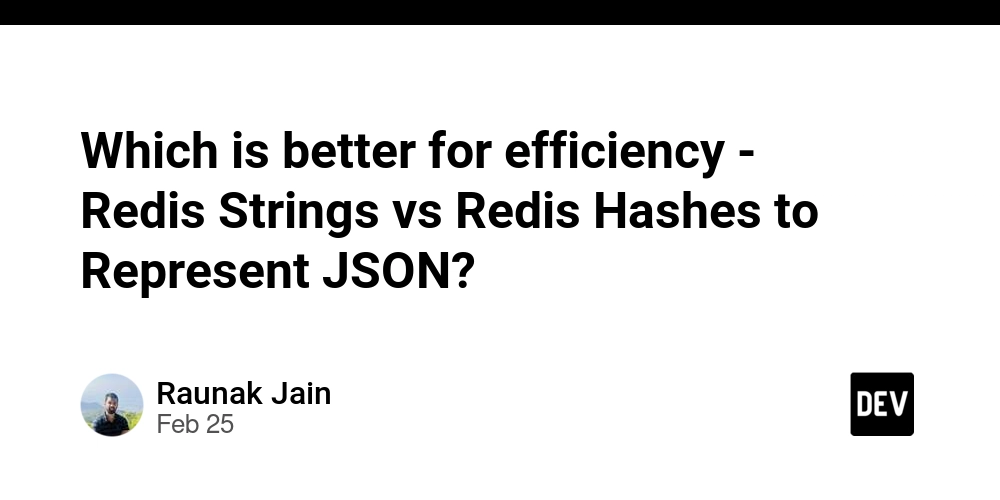Mastering DEX Development in 2025
The decentralized exchange (DEX) revolution is reshaping finance, offering traders a trustless, non-custodial way to swap assets. But what does it take to build a successful DEX? How do market trends influence development? What resources are required, and what challenges must be overcome? In this guide, we'll walk through the essentials of decentralized exchange development, from fundamental concepts to advanced strategies for liquidity aggregation, security, and scalability. DEX Development Trends in the Market The decentralized exchange development landscape is evolving rapidly, and staying ahead means understanding the trends driving innovation. Let's explore the top trends shaping DEXs in 2025. Trend #1: AI in DEX Development Artificial intelligence (AI) is playing a pivotal role in decentralized exchange development. AI-driven market-making algorithms optimize liquidity pools, ensuring better price stability and reducing slippage. Machine learning models analyze trading patterns to detect wash trading, front-running, and other forms of market manipulation, enhancing the integrity of decentralized trading environments. Trend #2: Partnerships Fueling Growth in DEX Development Collaboration is key in blockchain ecosystems. Strategic partnerships between DEXs, liquidity providers, and other DeFi protocols create synergies that drive growth. For example, integrating with lending protocols allows users to access liquidity without leaving the platform. These collaborations not only expand functionality but also enhance user trust and adoption. Trend #3: Uniswap V4 and AMM Advancements Uniswap V4 introduces significant innovations in automated market maker (AMM) design. The introduction of "hooks" allows developers to customize liquidity pools, enabling features like dynamic fees, limit orders, and more. These advancements make decentralized exchange development more flexible and adaptable to user needs. Trend #4: The Rise of Decentralized Derivatives Decentralized derivatives platforms are gaining traction, offering perpetual contracts, options, and synthetic assets without centralized intermediaries. Platforms like dYdX and GMX have seen explosive growth due to their ability to offer leverage trading in a trustless manner. Trend #5: Liquidity Aggregation in DEXs Liquidity aggregation solves one of the biggest challenges in decentralized exchange development---fragmented liquidity. By pooling liquidity from multiple sources, DEXs can offer better prices and lower slippage. This trend is essential for any project aiming to compete with centralized exchanges. Fundamentals of Decentralized Exchange Development Before diving into decentralized exchange development, it's crucial to understand the basics. Let's break down the types of DEXs and market-making models. Types of DEXes Order Book DEX Development : Mimics traditional exchanges with an order-matching system but operates on-chain. Perpetual DEX Development : Enables leverage trading with perpetual futures contracts. AMM DEX Development : Uses liquidity pools where users provide funds to facilitate trading. Hybrid DEXes : Combines order books with AMMs for optimized liquidity and pricing.

The decentralized exchange (DEX) revolution is reshaping finance, offering traders a trustless, non-custodial way to swap assets. But what does it take to build a successful DEX? How do market trends influence development? What resources are required, and what challenges must be overcome? In this guide, we'll walk through the essentials of decentralized exchange development, from fundamental concepts to advanced strategies for liquidity aggregation, security, and scalability.
DEX Development Trends in the Market
The decentralized exchange development landscape is evolving rapidly, and staying ahead means understanding the trends driving innovation. Let's explore the top trends shaping DEXs in 2025.
Trend #1: AI in DEX Development
Artificial intelligence (AI) is playing a pivotal role in decentralized exchange development. AI-driven market-making algorithms optimize liquidity pools, ensuring better price stability and reducing slippage. Machine learning models analyze trading patterns to detect wash trading, front-running, and other forms of market manipulation, enhancing the integrity of decentralized trading environments.
Trend #2: Partnerships Fueling Growth in DEX Development
Collaboration is key in blockchain ecosystems. Strategic partnerships between DEXs, liquidity providers, and other DeFi protocols create synergies that drive growth. For example, integrating with lending protocols allows users to access liquidity without leaving the platform. These collaborations not only expand functionality but also enhance user trust and adoption.
Trend #3: Uniswap V4 and AMM Advancements
Uniswap V4 introduces significant innovations in automated market maker (AMM) design. The introduction of "hooks" allows developers to customize liquidity pools, enabling features like dynamic fees, limit orders, and more. These advancements make decentralized exchange development more flexible and adaptable to user needs.
Trend #4: The Rise of Decentralized Derivatives
Decentralized derivatives platforms are gaining traction, offering perpetual contracts, options, and synthetic assets without centralized intermediaries. Platforms like dYdX and GMX have seen explosive growth due to their ability to offer leverage trading in a trustless manner.
Trend #5: Liquidity Aggregation in DEXs
Liquidity aggregation solves one of the biggest challenges in decentralized exchange development---fragmented liquidity. By pooling liquidity from multiple sources, DEXs can offer better prices and lower slippage. This trend is essential for any project aiming to compete with centralized exchanges.
Fundamentals of Decentralized Exchange Development
Before diving into decentralized exchange development, it's crucial to understand the basics. Let's break down the types of DEXs and market-making models.
Types of DEXes
Order Book DEX Development : Mimics traditional exchanges with an order-matching system but operates on-chain.
Perpetual DEX Development : Enables leverage trading with perpetual futures contracts.
AMM DEX Development : Uses liquidity pools where users provide funds to facilitate trading.
Hybrid DEXes : Combines order books with AMMs for optimized liquidity and pricing.











































































































































































![[The AI Show Episode 142]: ChatGPT’s New Image Generator, Studio Ghibli Craze and Backlash, Gemini 2.5, OpenAI Academy, 4o Updates, Vibe Marketing & xAI Acquires X](https://www.marketingaiinstitute.com/hubfs/ep%20142%20cover.png)




























































































































![[DEALS] The Premium Learn to Code Certification Bundle (97% off) & Other Deals Up To 98% Off – Offers End Soon!](https://www.javacodegeeks.com/wp-content/uploads/2012/12/jcg-logo.jpg)


![From drop-out to software architect with Jason Lengstorf [Podcast #167]](https://cdn.hashnode.com/res/hashnode/image/upload/v1743796461357/f3d19cd7-e6f5-4d7c-8bfc-eb974bc8da68.png?#)








































































































.png?#)

































_Christophe_Coat_Alamy.jpg?#)
 (1).webp?#)





































































































![Apple Considers Delaying Smart Home Hub Until 2026 [Gurman]](https://www.iclarified.com/images/news/96946/96946/96946-640.jpg)
![iPhone 17 Pro Won't Feature Two-Toned Back [Gurman]](https://www.iclarified.com/images/news/96944/96944/96944-640.jpg)
![Tariffs Threaten Apple's $999 iPhone Price Point in the U.S. [Gurman]](https://www.iclarified.com/images/news/96943/96943/96943-640.jpg)




































































































































